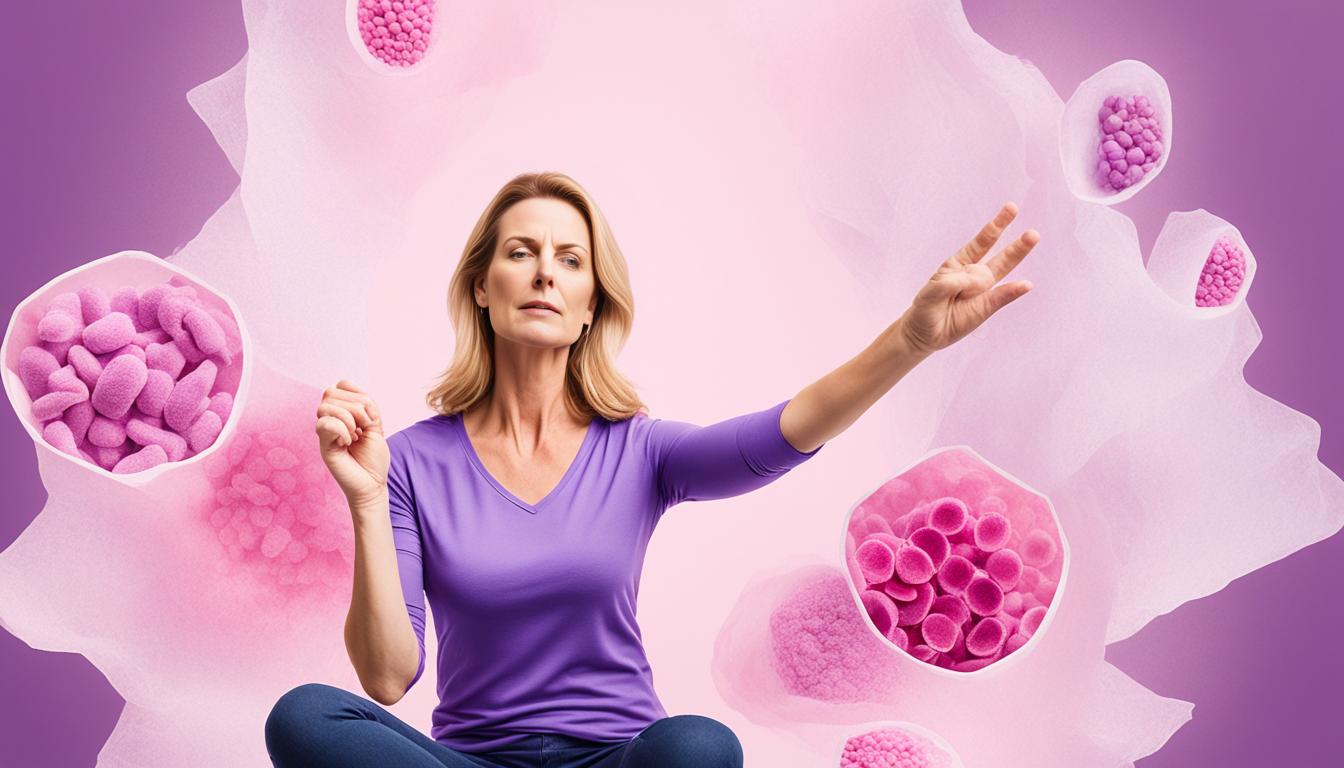Chronic vulvar pain, or vulvodynia, is a tough condition for many women. It brings ongoing pain and discomfort in the vulva. The impact on a woman’s life can be big, hurting her both physically and emotionally. Knowing about the symptoms, causes, and ways to treat this pain helps women who suffer from it.
Many things can lead to chronic vulvar pain. Hormonal changes, infections, problems with the muscles and bones, and nerve damage are leading causes. For example, menopause and certain meds can make the vulva hurt. Infections, like herpes, might cause itching and soreness. Excessive muscle contractions in the pelvic area can add to this pain. Finally, nerve damage from injuries or other health issues is another possible reason.
Diagnosing this kind of pain takes a lot of steps. It begins with talking about a woman’s medical history and doing a check-up. The doctor will check for other possible reasons for the pain, like infections. They might also do tests to learn more, such as checking the vaginal pH, doing fungal tests, and looking at muscle issues.
Normally, treatments for this pain only help a bit and don’t stop it completely. But now, there’s new hope in stem cell therapy, especially using Adipose-Derived Stem Cells (ADSCs). This therapy helps improve tissue health and is showing good results in women with vulvar dystrophy. It could be a better way to fight chronic vulvar pain, offering a longer relief.
Key Takeaways:
- Chronic vulvar pain, or vulvodynia, is a persistent condition characterized by pain and discomfort in the vulva.
- Causes of chronic vulvar pain may include hormonal changes, infections, musculoskeletal issues, and nerve damage.
- Diagnosis involves a comprehensive evaluation, including a medical history, physical examination, and ruling out other possible causes.
- Traditional treatments often provide only partial relief, but stem cell therapy shows promise as an alternative treatment option.
- Stem cell therapy, specifically Adipose-Derived Stem Cells (ADSCs), can enhance tissue trophism and improve symptoms in patients with vulvar dystrophy.
Causes and Symptoms of Chronic Vulvar Pain
Chronic vulvar pain, or vulvodynia, is a long-lasting issue that affects the vulva. It brings discomfort and pain. Various things can cause it, like hormonal changes, infections, musculoskeletal problems, and nerve damage.
Hormonal Changes
Hormonal changes can affect vulvar pain, especially during menopause or due to some medications. These changes can cause discomfort, burning, itching, soreness, and general pain.
Infections
Issues like herpes can lead to chronic vulvar pain. Infectious agents cause symptoms like burning, itching, soreness, and discomfort.
Musculoskeletal Issues
Problems with muscles and bones can also cause chronic vulvar pain. These issues bring persistent discomfort, itching, soreness, and other symptoms.
Nerve Damage
Nerve damage from injuries or medical problems is a big cause of vulvar pain. Damaged nerves can lead to symptoms like burning, itching, and soreness.
The symptoms of chronic vulvar pain are:
- Burning feeling in the vulva
- Intense itching and irritation
- More sensitivity to touch
- Feeling sore and tender
- Constant discomfort or pain
If you experience these symptoms, it’s important to see a doctor. They can offer the right diagnosis and treatment.
Understanding the causes and symptoms of vulvar pain stresses the need for medical help. This helps people find effective treatments. Working with a healthcare provider can lead to a personalized plan, improving quality of life.
Diagnosis and Treatment Options for Chronic Vulvar Pain
Diagnosing chronic vulvar pain, or vulvodynia, needs a detailed look. This includes taking a detailed medical history and doing a physical exam. Doctors also rule out other reasons for the pain.
Cotton swab tests can help pinpoint where you feel pain and how severe it is. Vaginal pH tests, fungal cultures, and muscle checks are also on the table. These help find what’s causing the pain.
For treating the pain, there are many options. Creams with local anesthetics or steroids can help for a short while. Physical therapy, like doing exercises for your pelvic floor, can be very helpful.
Transcutaneous electrical nerve stimulation, or TENS, is a new method to try. It uses a small device to help ease the pain. If nothing else works, surgery might be an option. This surgery removes the painful area in the vestibule.
It’s key for those with this pain to work closely with their doctors. Together, they can create a plan that addresses both the physical and emotional effects of the pain.

